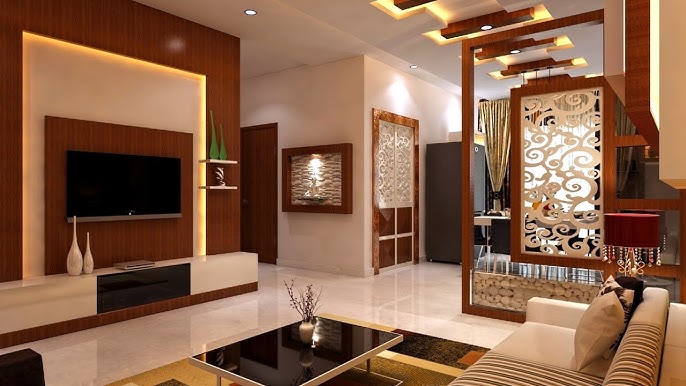Trust experts in miami luxury interior design for high-end home and commercial projects.
Trust experts in miami luxury interior design for high-end home and commercial projects.
Blog Article
Change Your Home With Necessary Concepts of Interior Decoration and Aesthetics
By recognizing the influence of color theory and the relevance of structure and patterns, one can produce spaces that are not only visually enticing but also deeply personal. Achieving this equilibrium involves more than mere design; it incorporates a calculated setup and an eager understanding of exactly how each aspect communicates within an area.
Recognizing Shade Concept
Shade theory is a basic element of interior decoration that significantly affects mood, understanding, and general aesthetic. Recognizing the principles of color concept permits designers to produce spaces that reverberate psychologically with passengers while fulfilling functional requirements (Architecture Firm). Shades can be classified into three key kinds: key, secondary, and tertiary. Each category plays a critical function in developing harmony within an area.
The emotional impact of colors is profound; warm tones such as reds and oranges evoke power and heat, while cool tones like blues and greens promote calmness and tranquility. The use of corresponding colors boosts aesthetic interest, developing striking contrasts that can boost an area's charm.
Neutral shades, on the other hand, work as a functional background, permitting various other layout aspects to radiate. It is crucial to consider factors such as lights and the room's function when selecting a shade combination, as these can change the perception of colors throughout the day.
Inevitably, a well-considered color design can transform an area, promoting a feeling of comfort and style that straightens with the citizens' preferences. Mastery of color theory is, for that reason, a crucial ability for any interior developer aiming to create harmonious and inviting environments.
Accomplishing Balance in Design
Exactly how can designers attain a feeling of stability in their areas? Accomplishing balance in design is fundamental to creating harmonious interiors.
Unbalanced equilibrium, on the other hand, depends on differing elements that still accomplish a natural appearance. This approach enables more dynamic and informal arrangements, offering passion while keeping stability. By carefully choosing differing sizes, shades, and appearances, developers can create an aesthetically engaging space that really feels balanced yet energised.
Radial balance stresses a central focal point with aspects radiating outside. This design is frequently seen in circular designs, where furniture and decor create a cohesive surround that draws the eye internal.
Inevitably, achieving equilibrium requires thoughtful factor to consider of range, percentage, and the relationships between components. luxury interior design. By skillfully applying these equilibrium principles, developers can change spaces right into atmospheres that feel both cosmetically pleasing and functionally unified, boosting the general experience for occupants
Significance of Spatial Understanding

A keen feeling of spatial recognition permits designers to identify focal factors within an area, directing the visitor's focus to crucial attributes while maintaining an overall feeling of unity. It additionally helps in the calculated placement of lights, which can dramatically influence the perception of area and state of mind. Moreover, understanding spatial partnerships allows the designer to accommodate the details demands of residents, ensuring that each area offers its designated objective without jeopardizing aesthetic appeals.
Ultimately, spatial recognition is critical for taking full advantage of the potential of any reference type of indoor area. By very carefully thinking about the interaction in between dimensions, design, and function, designers can create atmospheres that not only meet sensible needs but additionally evoke a feeling of comfort and appeal, improving the overall living experience.
Including Structure and Patterns
Embracing a varied series of structures and patterns can substantially improve the aesthetic and tactile appeal of an interior room. The critical use numerous products-- such as timber, steel, fabric, and rock-- produces deepness and passion, making a space really feel much more welcoming and dynamic. For instance, integrating smooth surfaces with harsh structures can develop a balance that draws the eye and involves the senses.
When incorporating patterns, consider both scale and repetition. Big patterns can act as focal factors, while smaller sized, subtle styles can enhance other components without overwhelming the room. Layering patterns, such as pairing floral paddings with candy striped tosses, includes intricacy and a feeling of consistency if executed attentively.
It is additionally crucial to maintain a cohesive shade combination, guaranteeing that appearances and patterns work with each other as opposed to contend for focus. By picking a couple of key appearances and patterns, you can develop a combined visual that mirrors your individual style while improving the overall ambiance of the area. Eventually, the cautious unification of these elements can change a mundane space right into a sophisticated environment rich with personality and heat.
Personalizing Your Area
Producing a room that mirrors your character is crucial to accomplishing an absolutely inviting setting. Personalization in interior decoration allows you to infuse your special style and rate of interests right into your home, transforming it from a simple shelter into a shelter that speaks to who you are. Begin by selecting a color scheme that resonates with your feelings-- strong shades can energize, while soft tones provide peace.
Integrate art work and decoration that mirror your interests, whether browse this site it be travel, nature, or abstract concepts. Showing personal collections, such as publications, photos, or souvenirs, can evoke cherished memories and develop focal factors within a room. Additionally, consider tailoring functional items, like upholstered furnishings, to align with your aesthetic choices.

Final Thought
To conclude, the makeover of a home through the vital principles see this here of indoor layout and appearance necessitates a comprehensive understanding of shade theory, balance, spatial understanding, texture, and personalization. Each aspect adds considerably to producing an unified and useful living environment - miami luxury interior design. By attentively integrating these concepts, individuals can improve the aesthetic allure and emotional vibration of their spaces, inevitably promoting a home that reflects special identities while providing convenience and functionality
Report this page